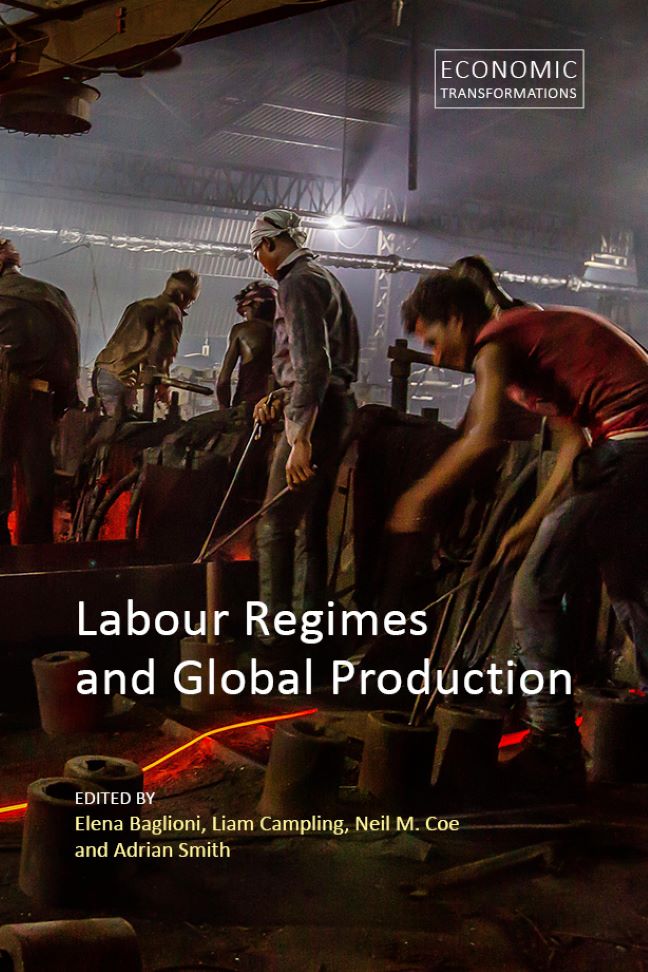62 results
The risk of highly pathogenic avian influenza in the Southern Ocean: a practical guide for operators and scientists interacting with wildlife
-
- Journal:
- Antarctic Science / Volume 35 / Issue 6 / December 2023
- Published online by Cambridge University Press:
- 21 December 2023, pp. 407-414
-
- Article
-
- You have access
- Open access
- HTML
- Export citation
Theoretical Underpinnings of ‘Land Abundance, Openness, and Industrialization’ How Openness Affects Output Elasticities in a 2 × 2 HOS Model with Product Differentiation – ERRATUM
-
- Journal:
- World Trade Review / Volume 22 / Issue 5 / December 2023
- Published online by Cambridge University Press:
- 22 November 2023, pp. 718-719
- Print publication:
- December 2023
-
- Article
-
- You have access
- Open access
- HTML
- Export citation
Radiofrequency ice dielectric measurements at Summit Station, Greenland
-
- Journal:
- Journal of Glaciology , First View
- Published online by Cambridge University Press:
- 09 October 2023, pp. 1-12
-
- Article
-
- You have access
- Open access
- HTML
- Export citation
Theoretical Underpinnings of ‘Land Abundance, Openness, and Industrialization’: How Openness Affects Output Elasticities in a 2 × 2 HOS Model with Product Differentiation
-
- Journal:
- World Trade Review / Volume 22 / Issue 3-4 / October 2023
- Published online by Cambridge University Press:
- 05 September 2023, pp. 323-333
- Print publication:
- October 2023
-
- Article
-
- You have access
- Open access
- HTML
- Export citation
A multi-country comparison of jurisdictions with and without mandatory nutrition labelling policies in restaurants: analysis of behaviours associated with menu labelling in the 2019 International Food Policy Study
- Part of
-
- Journal:
- Public Health Nutrition / Volume 26 / Issue 11 / November 2023
- Published online by Cambridge University Press:
- 04 September 2023, pp. 2595-2606
-
- Article
-
- You have access
- Open access
- HTML
- Export citation
9 - Law, Labour and Landscape in a Just Transition
- from Part II - Unmaking International Law
-
-
- Book:
- Locating Nature
- Published online:
- 22 September 2022
- Print publication:
- 29 September 2022, pp 229-252
-
- Chapter
- Export citation
Internet-delivered cognitive behaviour therapy for post-traumatic stress disorder: a randomised controlled trial and outcomes in routine care
-
- Journal:
- Behavioural and Cognitive Psychotherapy / Volume 50 / Issue 6 / November 2022
- Published online by Cambridge University Press:
- 04 August 2022, pp. 649-655
- Print publication:
- November 2022
-
- Article
- Export citation
12 - Fighting Jim Crow in a World of Empire
- from Part II - Competing Perspectives
-
-
- Book:
- The Cambridge History of America and the World
- Published online:
- 12 November 2021
- Print publication:
- 03 March 2022, pp 293-314
-
- Chapter
- Export citation
II - Theoretical and Methodological Developments
-
- Book:
- Labour Regimes and Global Production
- Published by:
- Agenda Publishing
- Published online:
- 20 January 2024
- Print publication:
- 31 January 2022, pp 79-80
-
- Chapter
- Export citation
18 - Conclusion: Mapping a Research Agenda for Labour Regime Analysis
-
-
- Book:
- Labour Regimes and Global Production
- Published by:
- Agenda Publishing
- Published online:
- 20 January 2024
- Print publication:
- 31 January 2022, pp 317-330
-
- Chapter
- Export citation
Index
-
- Book:
- Labour Regimes and Global Production
- Published by:
- Agenda Publishing
- Published online:
- 20 January 2024
- Print publication:
- 31 January 2022, pp 331-339
-
- Chapter
- Export citation
Contents
-
- Book:
- Labour Regimes and Global Production
- Published by:
- Agenda Publishing
- Published online:
- 20 January 2024
- Print publication:
- 31 January 2022, pp v-vi
-
- Chapter
- Export citation
Acknowledgements
-
- Book:
- Labour Regimes and Global Production
- Published by:
- Agenda Publishing
- Published online:
- 20 January 2024
- Print publication:
- 31 January 2022, pp vii-viii
-
- Chapter
- Export citation
14 - Labour Regimes and Trade-Based Integration
-
-
- Book:
- Labour Regimes and Global Production
- Published by:
- Agenda Publishing
- Published online:
- 20 January 2024
- Print publication:
- 31 January 2022, pp 247-268
-
- Chapter
- Export citation
I - Antecedents
-
- Book:
- Labour Regimes and Global Production
- Published by:
- Agenda Publishing
- Published online:
- 20 January 2024
- Print publication:
- 31 January 2022, pp 27-28
-
- Chapter
- Export citation
Contributors
-
- Book:
- Labour Regimes and Global Production
- Published by:
- Agenda Publishing
- Published online:
- 20 January 2024
- Print publication:
- 31 January 2022, pp ix-x
-
- Chapter
- Export citation
1 - Introduction: Labour Regimes and Global Production
-
-
- Book:
- Labour Regimes and Global Production
- Published by:
- Agenda Publishing
- Published online:
- 20 January 2024
- Print publication:
- 31 January 2022, pp 1-26
-
- Chapter
- Export citation
III - Doing Labour Regime Analysis
-
- Book:
- Labour Regimes and Global Production
- Published by:
- Agenda Publishing
- Published online:
- 20 January 2024
- Print publication:
- 31 January 2022, pp 189-190
-
- Chapter
- Export citation

Labour Regimes and Global Production
-
- Published by:
- Agenda Publishing
- Published online:
- 20 January 2024
- Print publication:
- 31 January 2022
Frontmatter
-
- Book:
- Labour Regimes and Global Production
- Published by:
- Agenda Publishing
- Published online:
- 20 January 2024
- Print publication:
- 31 January 2022, pp i-iv
-
- Chapter
- Export citation




